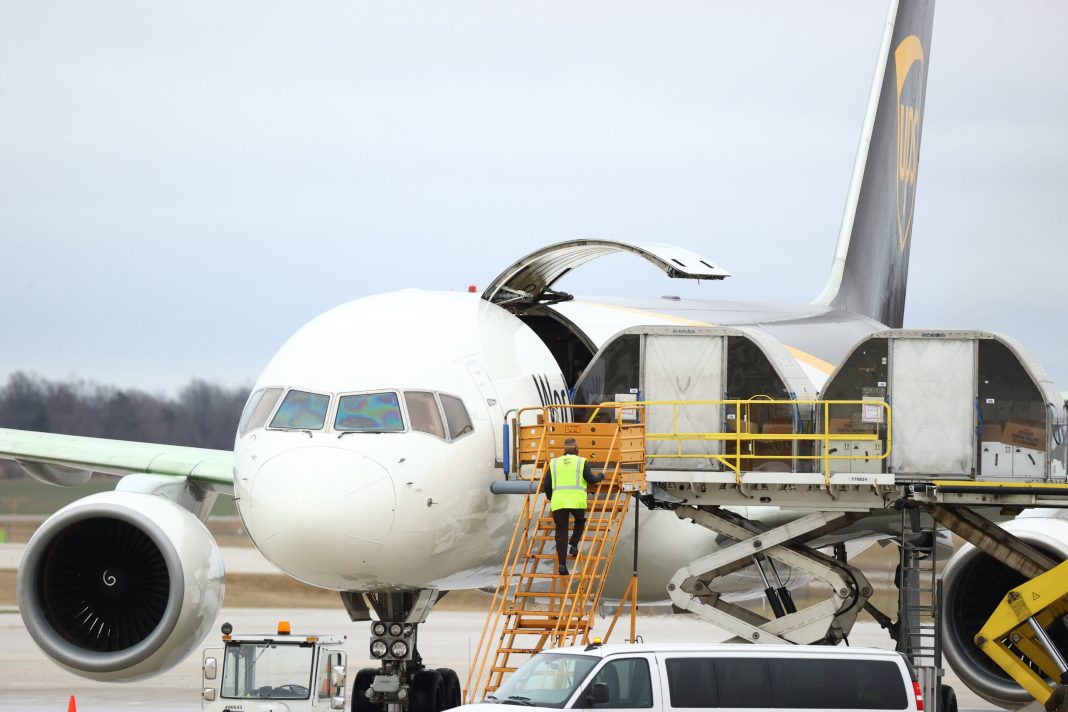As the Pfizer vaccine begins being distributed around the world, how are airlines overcoming the issue of dry ice? The answer to that is with some groundbreaking new packaging from Pfizer and some expert advice from planemaker Boeing.

The second most exciting thing about the Pfizer vaccine is its packaging
While we’re all delighted to see the successful rollout of the Pfizer-BioNTech COVID-19 vaccine beginning to take shape around the world, one of the less glamorous elements of this technological breakthrough is the packaging it is shipped in. Early in the process, Pfizer realized that the vaccine’s temperature requirements would make it a problem to ship, particularly by air, so they did something about it.
The pharmaceutical company has reportedly invested $2 billion in its production and logistics solutions, including redeveloping the dry ice packaging. According to Pfizer,
“We have developed packaging and storage innovations to be fit for purpose for the range of locations where we believe vaccinations will take place. We have specially designed, temperature-controlled thermal shippers utilizing dry ice to maintain recommended storage temperature conditions of -70°C±10°C for up to 10 days unopened. “

While we don’t know the specifics of the Pfizer packaging, what we do know is that it’s making a huge difference to the ease with which the vaccine will be transported around the world.
What’s the issue with dry ice?
Dry ice is, in itself, not a dangerous substance. However, how it behaves can be, particularly on an aircraft. It doesn’t melt like regular ice, but instead it sublimates. This causes it to change from a solid into a gas, releasing carbon dioxide (CO2) into the surrounding area.
In an enclosed space like an aircraft, this could become hazardous. Speaking at a media briefing today, Dan Freeman, a payloads engineer for Boeing and lead engineer on its Confident Travel Initiative, explained,
“With higher concentrations of CO2, the crew or the passengers can feel disoriented, and eventually they could become unconscious … depending upon how high the concentration goes, it can be harmful if not fatal to passengers and crew.”
Of course, aircraft have Environmental Control Systems (ECS) that are designed to control CO2, and which can vent these gasses to prevent build up. However, the venting is limited, which means the amount of dry ice being transported must be carefully managed.

The key factor to bring into the equation is the rate of sublimation. This rate can be used to calculate how much dry ice can be carried for a certain length of journey. Driving down that rate of sublimation brings up the amount that can be carried, thereby increasing the payload of vaccine on each plane.
So good, Boeing had to redraw its charts
Whatever Pfizer came up with, it’s working really well. The manufacturer claimed that the packaging it developed for the Pfizer-BioNTech COVID-19 vaccine had driven down the sublimation rate to less than 1% of its weight per hour. Early indications from real-life transportation scenarios suggest Pfizer was right on the money with this figure.
Prior to this pressing need to distribute large amounts of supercooled vaccine around the world, most goods shipped using dry ice would struggle to achieve a sublimation rate of anything under 2-3%.
To support the aviation industry through this huge logistical challenge, Boeing has been creating reference charts to assist in calculations of maximum dry ice loads. These include aircraft specific guidance, data curves of dry ice loading over time, and information that is useful not just to Boeing operators but also to all aircraft owners worldwide.
Traditionally, Boeing’s data curves for dry ice loading went down to 1%. In response to the very low sublimation rates of the Pfizer packaging, Boeing had to extend its charts into the range below 1%. While we can’t share the curves with you at this time, it’s safe to say that the maximum level of transportable vaccine increases exponentially with every fraction of a percent lower sublimation.

To illustrate this point, for a typical Boeing 777-300, goods using dry ice with a sublimation rate of 2%, Boeing might calculate the maximum load to be 3200 lbs. At 1%, that would increase to 6400 lbs. At 0.5%, the volume soars to a staggering 12,500 lbs.
What Pfizer has done with its groundbreaking packaging is to solve the biggest problem that was presented with vaccine shipment. It could well reshape the transportation of low-temperature goods in the future, making dry ice shipments far easier to handle. Freeman added,
“The Pfizer packaging is actually much better than others. I don’t know if that’s the result of new materials or the fact that we’re transporting very standardized vaccine containers, which allows them to be very efficient with packaging. But I’m encouraged by the fact that we have such a low sublimation rate. And if we’re able to extend that engineering science into other packaging for other products, I think that it could be very useful in efficiently carrying cold items for long periods.”
Let us know your thoughts on vaccine transportation, and how Boeing and Pfizer are working to make it easier for airlines.
[ad_2]
Source link


